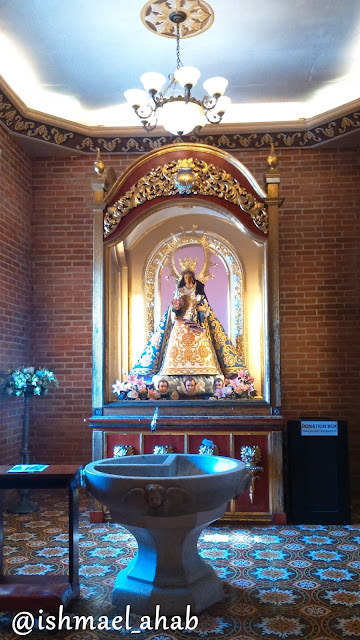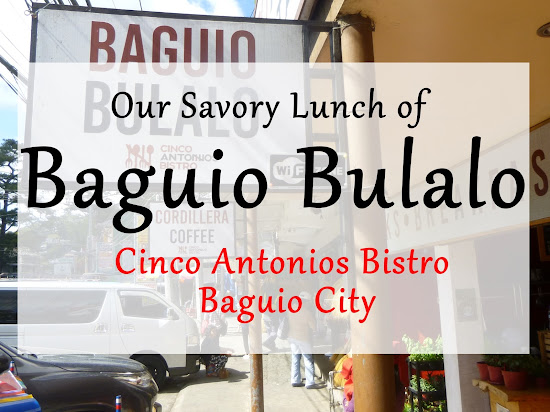The only church that comes to mind of many whenever “Binondo Church” is mentioned is the majestic church at the west end of Ongpin Street. This is not surprising since this church, officially known as the Minor Basilica of San Lorenzo Ruiz, is the biggest historical landmark in the area. But there is another parish church standing at the back of the big church, seemingly hidden, and tucked away from the eyes of many. The nondescript church, occupying the first floor of San Lorenzo Ruiz Academy, is the Binondo Chinese Parish Church.
The bigger Binondo Church was established by the Order of Preachers or Dominicans in 1596. Since then, the care of the parish changed hands between the Dominican friars and the secular priests of Archdiocese of Manila. Binondo Church is currently under the administration of Archdiocese of Manila.
Binondo Church was finally transferred to the care of the secular priests of Archdiocese of Manila in 1898 and became a “Filipino Church”. The result of this move is the destruction of Chinese heritage of that church, particularly the removal of tombstone of dead Chinese Catholics in and around the church. Only few of such tombstones remained and now serve as flooring at the entrance of Binondo Church.
Despite the transfer of Binondo Church to the secular priests, the Dominicans still ministered the Chinese and Chinese mestizos of Binondo. In fact, Binondo is still fall under Dominicans’ Province of Our Lady of the Rosary until today.
I cannot find any online record of the establishment of a separate parish for the Chinese in Binondo. The dearth of church records is possibly due to the destruction of Binondo Church during the Second World War. However, the seal of Our Lady of the Most Holy Rosary Binondo Chinese Parish Church indicates the year 1923, which may well be the establishment of the parish for the Chinese and Chinese mestizo living in Manila.
 |
| (Source: Facebook) |
Binondo Church and convent were heavily destroyed during the aerial bombardment by the Americans during the liberation of Manila. Only a part of the facade and the bell tower remained standing.
Fortunately, Catholics of Binondo were blessed to have Father Antonio Garcia, who never ceased in caring for his flock. He celebrated daily masses and heard confessions in the house of Mr. Jose Co-Ching-Yan. His heroic effort was felt by his parishioners who flocked to him and felt the presence of God during the difficult time during and after the war.
Father Garcia approached Msgr. O’Doherty, the Archbishop of Manila, and asked for help in the restoration of the Binondo Chinese Parish. His request was granted in April 27, 1945 when a 700-meter parcel of land was given to him for the construction of a chapel that is exclusive for Chinese Catholics. Construction was quick because it was inaugurated six months later. I bet that the parishioners willingly and cheerfully provided materials and labor for their chapel.
Father Garcia was not content with having a chapel because he also wanted to establish a school for his parishioners. His dream came true through the help of his parishioners. The school that they built, which was named Crusaders Academy, was inaugurated by Apostolic Nuncio in July 14, 1946 and officially founded on October 17, 1946. The school was later renamed as San Lorenzo Ruiz Academy to honor the Filipino-Chinese martyr who became the first canonized saint from the Philippines.
I rarely enter the Binondo Chinese Parish Church because it is closed most of the time. However, during one time when I entered the church I was blessed to see Mama Mary's relic, which is said to be a portion of her clothes.
The altar of this church is quite simple. It just have a big image of the crucified Christ and the tabernacle below it.
Very few enter this church. I guess it is the result of its exclusivity. In the morning masses that I attended, I can count the attendees on the fingers of my hands. However, based on the parish’s Facebook page, the community is alive during special event like the recent procession last Palm Sunday.
The Binondo Chinese Church is dedicated to Our Lady of the Most Holy Rosary because of the Dominicans’ deep connection with the Virgin Mary through praying the rosary. It is believed that Saint Dominic, founder of the Dominican Order, received the rosary from Mama Mary herself.
Inside the Binondo Chinese Church is a big statue depicting the scene where Saint Dominic received the rosary from Our Lady of the Most Holy Rosary. It was Lent during my last visit and images of the saints were covered so I was not able to take good photo of the image. Good thing that there good images of it in Binondo Chinese Church Facebook page.
 |
| (Source: Binondo Chinese Church FB page) |
For those who wish to visit Binondo Chinese Parish Church, here is the schedule of Mass and other services:
Holy Mass
Monday to Friday - 7:00 AM (English) and 6:00 PM (English)
Wednesday - 6:00 PM (Mass and Holy Hour)
First Friday - 6:00 PM (Mass and Novena)
Sunday - 7:00 AM (Mandarin), 8:00 AM (English), 9:00 AM (English), 6:00 PM (English)
Baptism
Regular - Sunday at 11:00 AM
Special - By appointment
Wedding - By appointment
Confessions
Daily at 5:45 PM
---
Prayer to Our Lady, Queen of the Most Holy Rosary
Queen of the most holy Rosary, in these times of such brazen impiety, manifest thy power with the signs of thine ancient victories, and from thy throne, whence thou dost dispense pardon and graces, mercifully regard the Church of thy Son, His Vicar on earth, and every order of clergy and laity, who are sore oppressed in the mighty conflict. Do thou, who art the powerful vanquisher of all heresies, hasten the hour of mercy, even though the hour of God's justice is every day provoked by the countless sins of men. For me who am the least of men, kneeling before thee in supplication, do thou obtain the grace I need to live righteously upon earth and to reign among the just in heaven, the while in company with all faithful Christians throughout the world, I salute thee and acclaim thee as Queen of the most holy Rosary.
Queen of the most holy Rosary, pray for us!
Amen.
---
Visita Iglesia is a Catholic tradition of visiting seven churches during Maundy Thursday. For each day, this Holy Week, I will feature one church as a sort of virtual Visita Iglesia.
---
Churches that I featured for Visita Iglesia 2019
Palm Sunday - Our Lady of the Abandoned Church in Marikina City
Holy Monday - Our Lady of the Most Holy Rosary Chinese Parish Church in Binondo, Manila
Holy Monday - Our Lady of the Most Holy Rosary Chinese Parish Church in Binondo, Manila
---
References:
San Lorenzo Ruiz Academy at Wikipedia
Our Lady of the Most Holy Rosary - Binondo Chinese Parish Facebook page
Prayer to Our Lady, Queen of the Most Holy Rosary at ThoughtCo
Toward a History of Chinese Burial Grounds in Manila during the Spanish Colonial Period by Richard T. Chu and Teresita Ang See
San Lorenzo Ruiz Academy Facebook page
Binondo Church: 8 Things to Know about its History in The Manila Project
San Lorenzo Ruiz Academy at Wikipedia
Our Lady of the Most Holy Rosary - Binondo Chinese Parish Facebook page
Prayer to Our Lady, Queen of the Most Holy Rosary at ThoughtCo
Toward a History of Chinese Burial Grounds in Manila during the Spanish Colonial Period by Richard T. Chu and Teresita Ang See
San Lorenzo Ruiz Academy Facebook page
Binondo Church: 8 Things to Know about its History in The Manila Project































